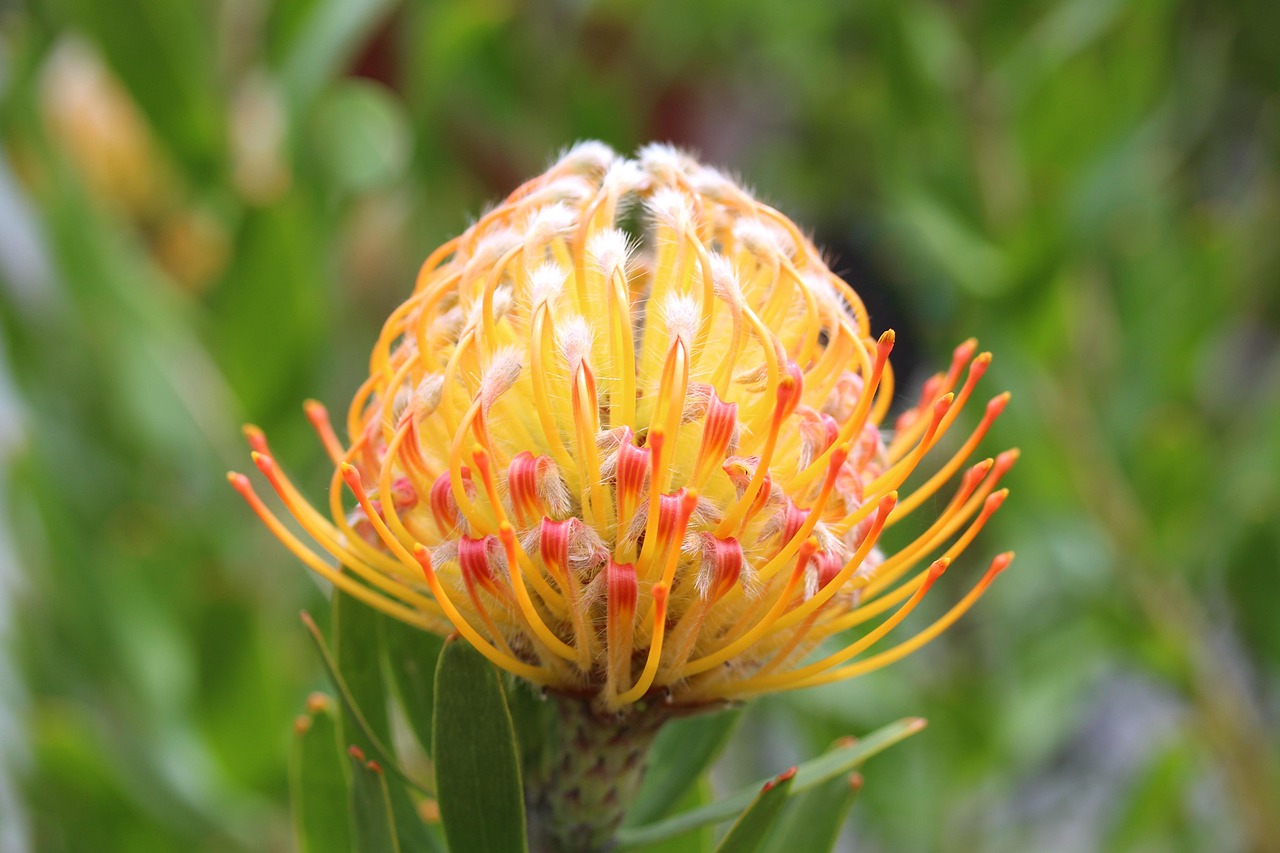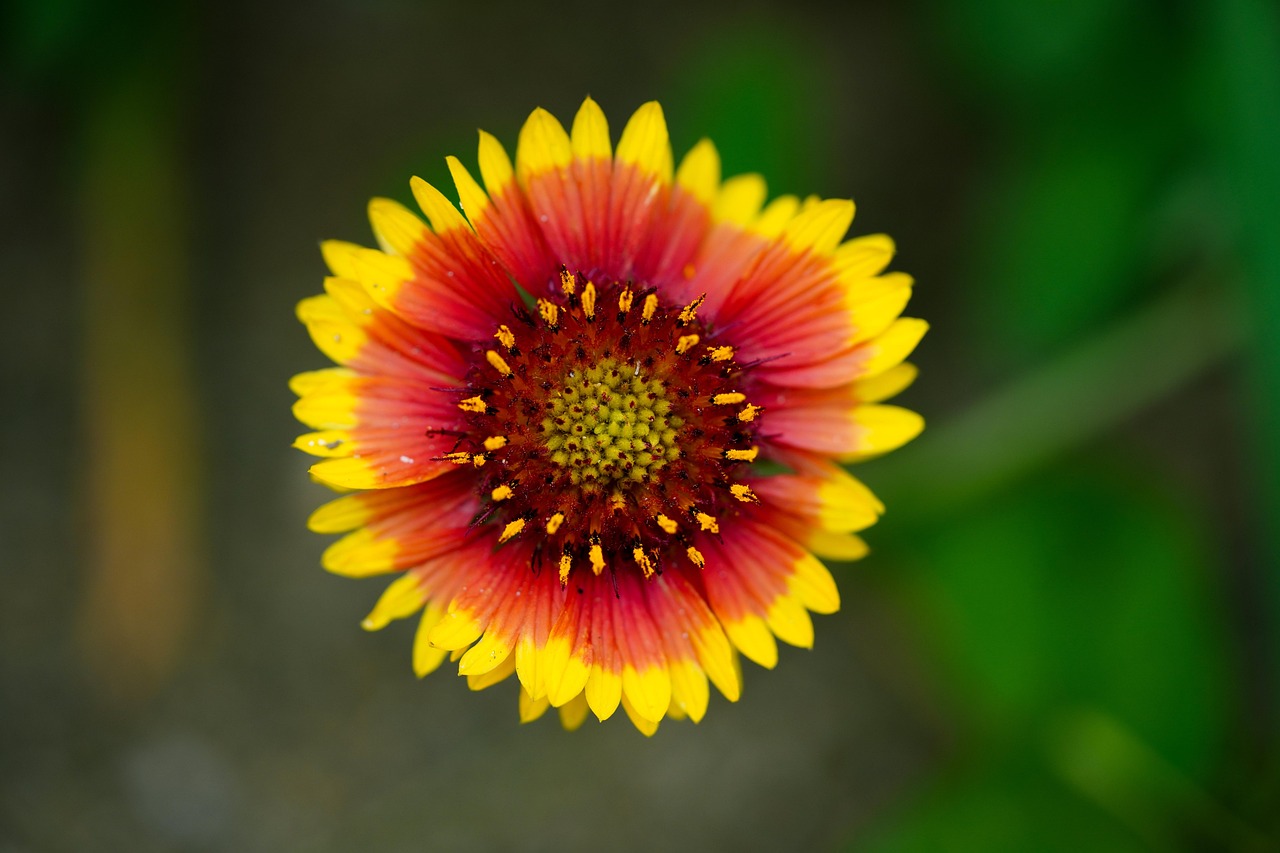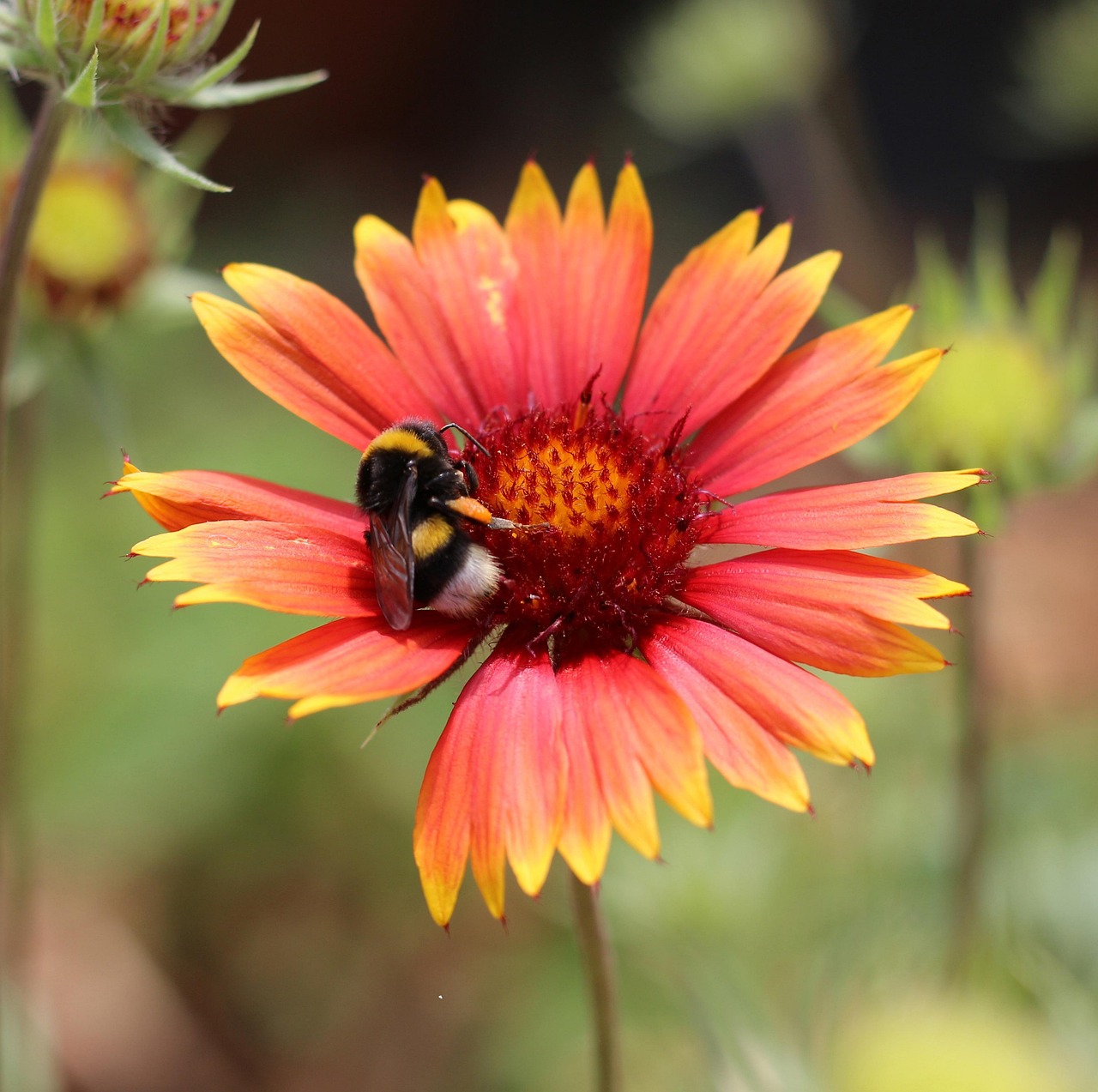The Firewheel tree, also known as the Gaillardia or Indian Blanket, typically exhibits a moderate growth rate, reaching 10 to 20 feet in height within 5 to 10 years. This rapid growth contributes to its vibrant floral displays that attract pollinators and enhance landscapes.
Understanding the Firewheel Tree
The Firewheel tree, scientifically known as Koelreuteria paniculata, is a deciduous tree native to Asia. It is celebrated for its stunning clusters of yellow flowers that bloom during the summer months. The bright floral displays are not only visually appealing but also serve ecological purposes, such as attracting bees and butterflies.

This tree is often used in urban landscaping due to its resilience. It can thrive in various soil types and withstands drought conditions once established. The Firewheel tree’s attractive foliage and blossoms make it a popular choice among gardeners and landscapers looking to create vibrant outdoor spaces.
Growth Characteristics
The growth rate of the Firewheel tree is influenced by several factors, including soil quality, climate, and care practices. Understanding these factors is essential for optimal growth and vibrant displays.
| Factor | Impact on Growth Rate |
|---|---|
| Soil Quality | Well-drained, nutrient-rich soil promotes faster growth. |
| Climate | Thrives in warm climates; frost can slow growth. |
| Watering | Regular watering aids establishment; drought tolerance improves with age. |
| Sunlight | Full sun exposure enhances flowering and growth speed. |
Optimal Conditions for Growth
To ensure the Firewheel tree reaches its full potential, certain conditions need to be met. These include selecting the right planting location and providing adequate care.

- Location: Choose a site with full sun exposure for at least six hours a day.
- Soil Preparation: Amend the soil with organic matter to improve drainage and fertility.
- Water Management: Water the tree regularly during its first year to establish roots.
- Pest Control: Monitor for pests and diseases that may hinder growth.
The Firewheel tree is relatively low-maintenance once established. However, attention during the early years can significantly enhance growth rates and flowering performance. Regular pruning can also help maintain shape and promote new growth.
Flowering Cycle
The flowering cycle of the Firewheel tree typically begins in late spring and continues through summer. During this period, the tree produces clusters of bright yellow flowers that eventually turn into decorative seed pods in the fall. This cycle not only adds aesthetic value but also provides food sources for wildlife.
The vibrant flowers can last several weeks, creating a stunning visual display. As the flowers fade, the green foliage remains lush, contributing to the tree’s overall beauty throughout the year. This extended period of color makes the Firewheel tree an excellent choice for landscapes aimed at year-round interest.

Conclusion on Growth Rate Factors
In summary, the growth rate of the Firewheel tree is influenced by various environmental factors. By providing the right conditions and care, gardeners can enjoy bright floral displays that enhance their outdoor spaces. This tree stands out not only for its beauty but also for its adaptability to different landscapes.
Maintenance Practices for Optimal Growth
To achieve a vibrant floral display, it is essential to implement proper maintenance practices for the Firewheel tree. Regular care ensures healthy growth and enhances the visual appeal of the tree. Below are key maintenance practices to consider.
Watering Guidelines
Watering is crucial, especially during the initial years after planting. Here are some guidelines to follow:

- First Year: Water deeply once a week to help establish a robust root system.
- Following Years: Reduce frequency; water only during prolonged dry spells.
- Soil Moisture: Ensure the soil is well-drained to prevent root rot.
Fertilization
Providing the right nutrients can significantly boost the growth rate of the Firewheel tree. Here are some fertilization tips:
- Type of Fertilizer: Use a balanced, slow-release fertilizer suitable for flowering trees.
- Application Time: Fertilize in early spring before new growth begins.
- Frequency: Apply fertilizer annually, following package instructions for dosage.
Pruning Techniques
Regular pruning encourages healthy growth and enhances flowering. Consider the following techniques:
- Timing: Prune during late winter or early spring when the tree is dormant.
- Method: Remove dead or damaged branches and thin out crowded areas to improve air circulation.
- Shaping: Maintain a balanced shape by trimming back overly long branches.
Pest and Disease Management
The Firewheel tree is generally resilient but can be susceptible to certain pests and diseases. Identifying these issues early can prevent significant damage. Below are common pests and diseases to watch for:
| Pest/Disease | Description | Control Methods |
|---|---|---|
| Aphids | Small insects that suck sap from leaves, causing yellowing. | Use insecticidal soap or neem oil. |
| Scale Insects | Tiny, flat insects that attach to stems and leaves. | Remove by hand or treat with horticultural oil. |
| Root Rot | A fungal disease caused by overwatering and poor drainage. | Avoid overwatering; improve soil drainage. |
| Leaf Spot | Disease that causes dark spots on leaves, leading to premature leaf drop. | Remove infected leaves and apply fungicide if necessary. |
Environmental Considerations
The Firewheel tree thrives in specific environmental conditions. Understanding these can enhance its growth potential and flowering capabilities. Key environmental considerations include:
- Climate: Prefers warm climates; can tolerate moderate drought once established.
- Soil Type: Ideal in sandy loam or clay soils that drain well.
- Sunlight: Requires full sun for optimal flowering; partial shade may reduce bloom quality.
Companion Planting
Companion planting can improve the aesthetics and health of your garden. When planted alongside compatible species, the Firewheel tree can thrive even more. Consider these suitable companions:
- Lantana: Attracts pollinators while complementing the Firewheel’s color.
- Sage: Deterrent for pests and beneficial for soil quality.
- Echinacea (Coneflower): Enhances visual appeal and provides habitat for beneficial insects.
Selecting companion plants carefully can create a thriving ecosystem. This not only boosts the health of the Firewheel tree but also contributes to a vibrant, colorful landscape throughout the growing season.
Seasonal Care for the Firewheel Tree
Caring for the Firewheel tree involves seasonal adjustments to ensure optimal growth and flowering. Each season presents unique challenges and opportunities for enhancing the health and beauty of the tree.
Spring Care
Spring is a vital time for rejuvenation and growth. During this season, focus on the following:
- Fertilization: Apply a slow-release fertilizer to provide essential nutrients as new growth emerges.
- Pruning: Remove any dead or damaged branches to encourage healthy new growth.
- Watering: Begin a regular watering schedule if rainfall is insufficient.
Summer Care
In summer, the Firewheel tree is in full bloom. Maintaining its health during this period is crucial:
- Watering: Ensure consistent moisture, especially during hot spells. Deep watering is preferred to promote root growth.
- Pest Management: Monitor for pests like aphids and scale insects. Early intervention can prevent infestations.
- Deadheading: Remove spent flowers to encourage continuous blooming throughout the summer.
Autumn Care
As autumn approaches, prepare the Firewheel tree for the cooler months ahead:
- Pruning: Lightly prune to maintain shape but avoid heavy pruning, as this can stress the tree before winter.
- Mulching: Apply a layer of mulch around the base to retain moisture and regulate soil temperature.
- Watering: Continue to water if necessary, especially before winter dormancy.
Winter Care
During winter, the Firewheel tree enters a dormant phase. Although growth slows, some care is still required:
- Protection: In areas with harsh winters, consider wrapping the trunk with burlap to shield it from extreme cold.
- Watering: Water during warm spells if the ground is not frozen, ensuring that the roots do not dry out.
- Pest Inspection: Check for any overwintering pests and take appropriate action if needed.
Common Issues and Troubleshooting
Despite proper care, issues may arise with the Firewheel tree. Understanding common problems can help address them effectively.
Leaf Discoloration
If you notice yellowing or browning leaves, it may indicate several issues:
- Nutrient Deficiency: Yellowing may suggest a lack of nitrogen. A balanced fertilizer can help restore color.
- Overwatering: Browning edges can indicate root rot. Ensure proper drainage and reduce watering frequency.
- Pests: Check for signs of insect infestation which may also cause discoloration.
Poor Flower Production
Lack of blooms can be disappointing. Consider these potential causes:
- Insufficient Sunlight: The Firewheel tree requires full sun. If shaded, it may not flower well.
- Improper Pruning: Heavy pruning at the wrong time can affect flowering. Ensure correct timing in spring.
- Nutrient Shortage: A lack of phosphorus can hinder blooming. Fertilize accordingly.
Root Problems
Healthy roots are essential for overall plant health. Watch for signs of root problems:
- Poor Growth: Stunted growth may indicate root-bound conditions or poor soil quality.
- Soggy Soil: Consistently wet soil can lead to root rot; adjust watering practices as needed.
- Pest Damage: Roots may be damaged by pests such as nematodes. Consider soil testing if issues persist.
Aesthetic Uses in Landscaping
The Firewheel tree’s vibrant blooms and unique structure make it an excellent choice for various landscaping applications. Its striking appearance can enhance both residential and public spaces.
Ornamental Uses
The bright flowers and attractive foliage of the Firewheel tree make it ideal for ornamental purposes. Some common uses include:
- Specimen Tree: Use as a focal point in gardens or yards due to its height and flowering capability.
- Border Planting: Plant in rows or clusters along pathways or property lines for a colorful display.
- Trees in Parks: Useful in public parks and recreational areas where visual appeal is desired.
Ecosystem Benefits
The Firewheel tree plays a vital role in local ecosystems, offering benefits beyond its aesthetic value:
- Pollinator Attraction: The flowers attract bees, butterflies, and other pollinators essential for biodiversity.
- Shelter for Wildlife: The tree provides nesting sites and shelter for various bird species.
- Erosion Control: Its root system helps stabilize soil, preventing erosion in landscaped areas.
The multiple uses of the Firewheel tree in both aesthetics and ecology make it a valuable addition to any landscape design. By understanding how to care for it properly and addressing common issues, gardeners can enjoy its beauty for many years to come.
Firewheel Tree in Urban Landscapes
The Firewheel tree is increasingly popular in urban landscapes due to its adaptability and aesthetic appeal. As cities strive to become greener, this tree offers several benefits that align with urban planning goals.
Urban Aesthetics
In urban environments, the Firewheel tree provides striking color and visual interest. Its bright yellow flowers and lush green foliage can brighten up concrete landscapes. Here are some ways it enhances urban aesthetics:
- Colorful Accents: The vibrant flowers create beautiful focal points in parks, gardens, and streetscapes.
- Seasonal Displays: With a flowering period that spans months, the Firewheel tree ensures continual beauty throughout the spring and summer.
- Contrast with Hardscapes: The tree’s natural form and texture contrast beautifully against the rigid lines of buildings and pavements.
Environmental Impact in Cities
Beyond aesthetics, the Firewheel tree contributes to environmental sustainability in urban settings:
- Air Quality Improvement: Trees help filter pollutants from the air, contributing to cleaner urban environments.
- Temperature Regulation: Urban heat islands can be mitigated by the shade provided by trees, which lowers surrounding temperatures.
- Stormwater Management: The tree’s root systems absorb rainwater, reducing runoff and promoting groundwater recharge.
Community Engagement and Education
Incorporating the Firewheel tree into community spaces provides opportunities for education and engagement. Community gardens or local parks featuring these trees can serve as educational hubs. Here are some ways to promote community involvement:
- Workshops: Host gardening workshops that teach residents how to care for their trees and the importance of biodiversity.
- School Projects: Involve local schools in planting and maintaining Firewheel trees as part of science or environmental education programs.
- Community Events: Organize events around tree planting or blooming seasons to celebrate urban greenery and raise awareness about native plants.
Firewheel Tree as a Symbol of Resilience
The Firewheel tree symbolizes resilience and adaptability, qualities that are essential for both urban environments and personal gardens. Its ability to thrive in various conditions mirrors the strength of communities that embrace biodiversity and sustainability. This tree represents hope for a greener future, reminding us of the beauty and importance of nature in our lives.
Final Thoughts
The Firewheel tree is not just a beautiful addition to landscapes; it serves multiple roles that enhance both ecological health and aesthetic appeal. Its moderate growth rate allows for quick establishment, while its vibrant flowers provide extended color throughout the growing season. With proper care, this tree becomes a cherished part of any garden or public space.
As urban areas continue to develop, integrating trees like the Firewheel into design plans will contribute significantly to biodiversity, air quality improvement, and community well-being. By understanding its needs and benefits, gardeners and city planners alike can create spaces that are not only visually stunning but also ecologically sound.
In conclusion, the Firewheel tree stands out as a versatile choice for anyone looking to enhance their landscape while supporting local ecosystems. Its combination of beauty, resilience, and environmental benefits makes it a valuable asset in gardens, parks, and urban areas. Whether you are a homeowner or a city planner, consider adding this remarkable tree to your green spaces for years of enjoyment and ecological service.
